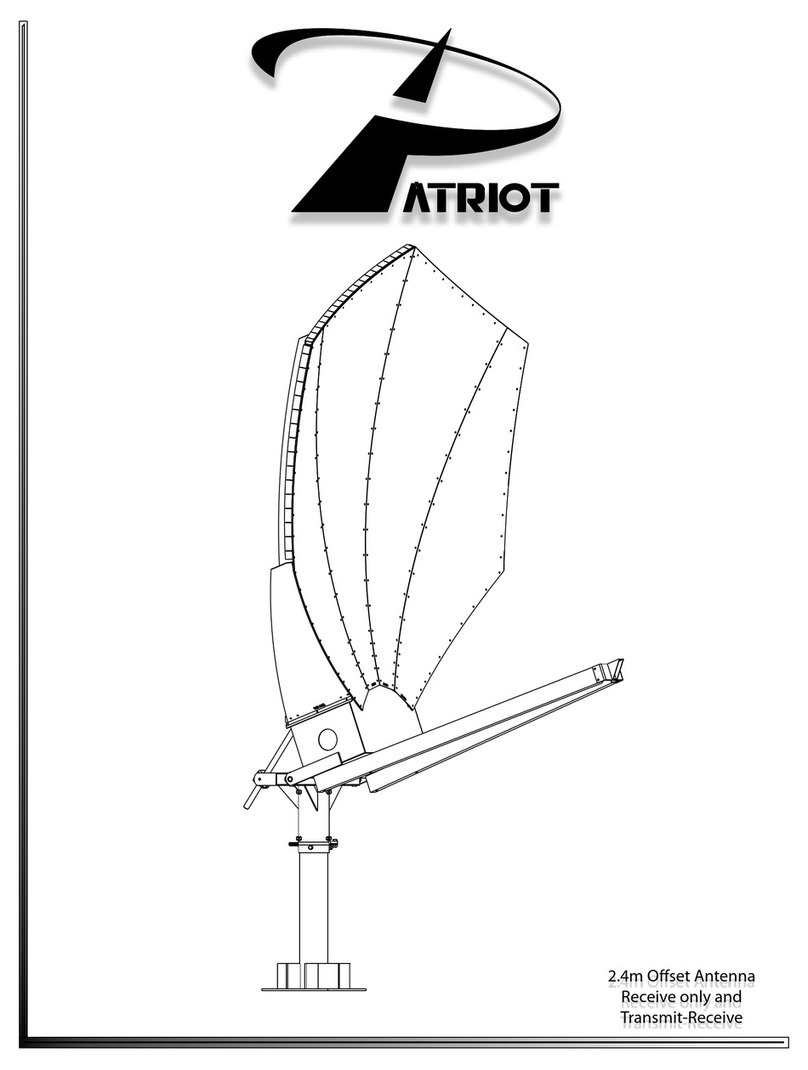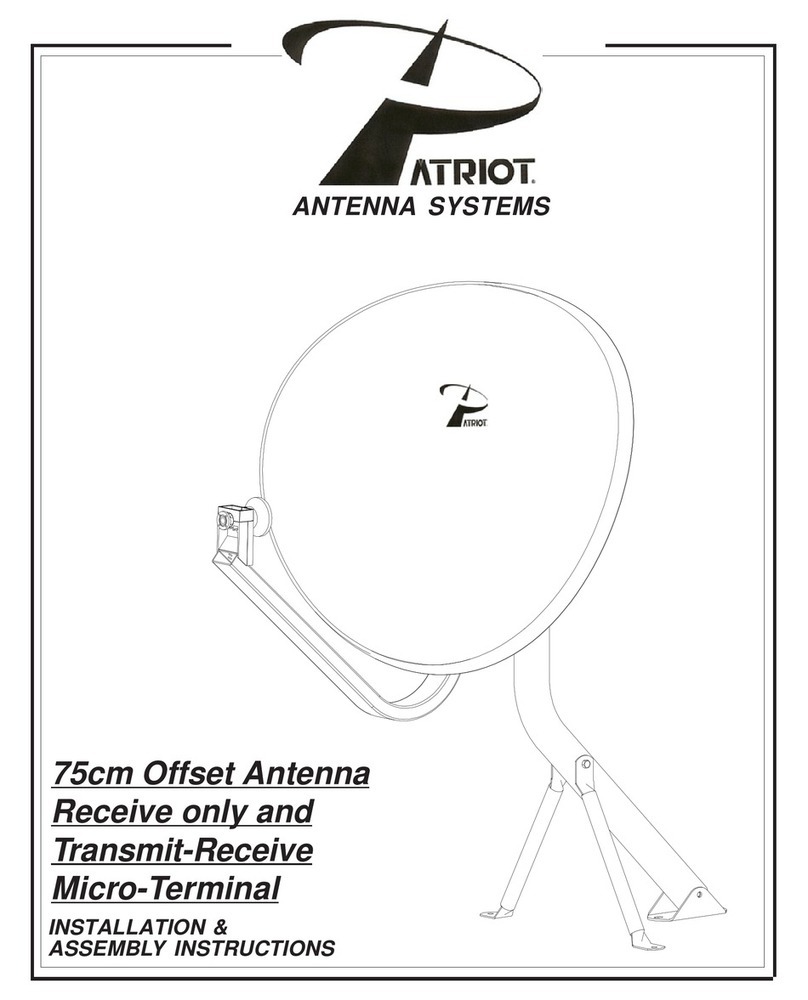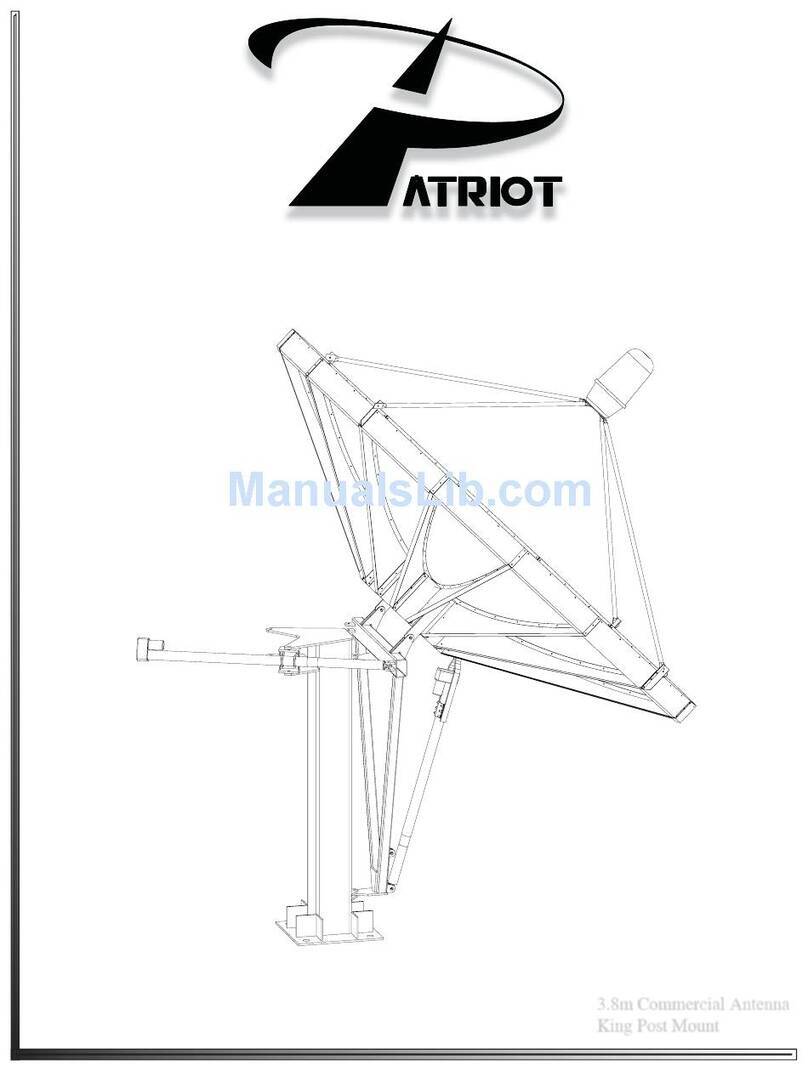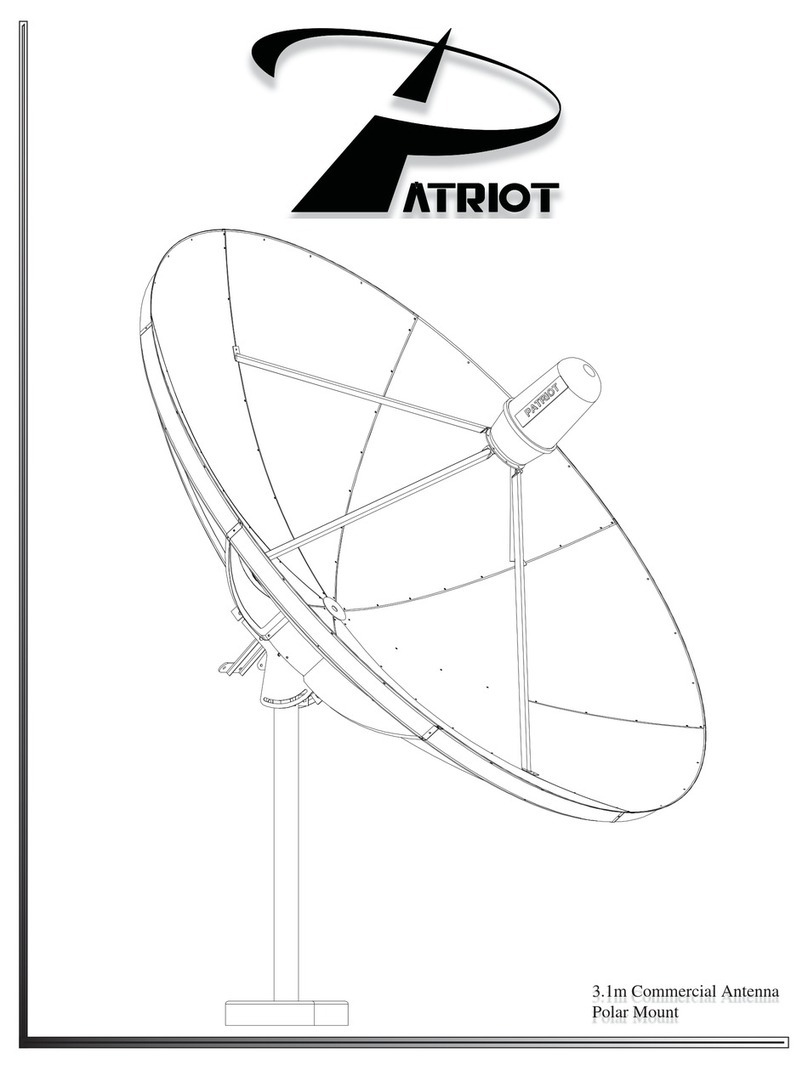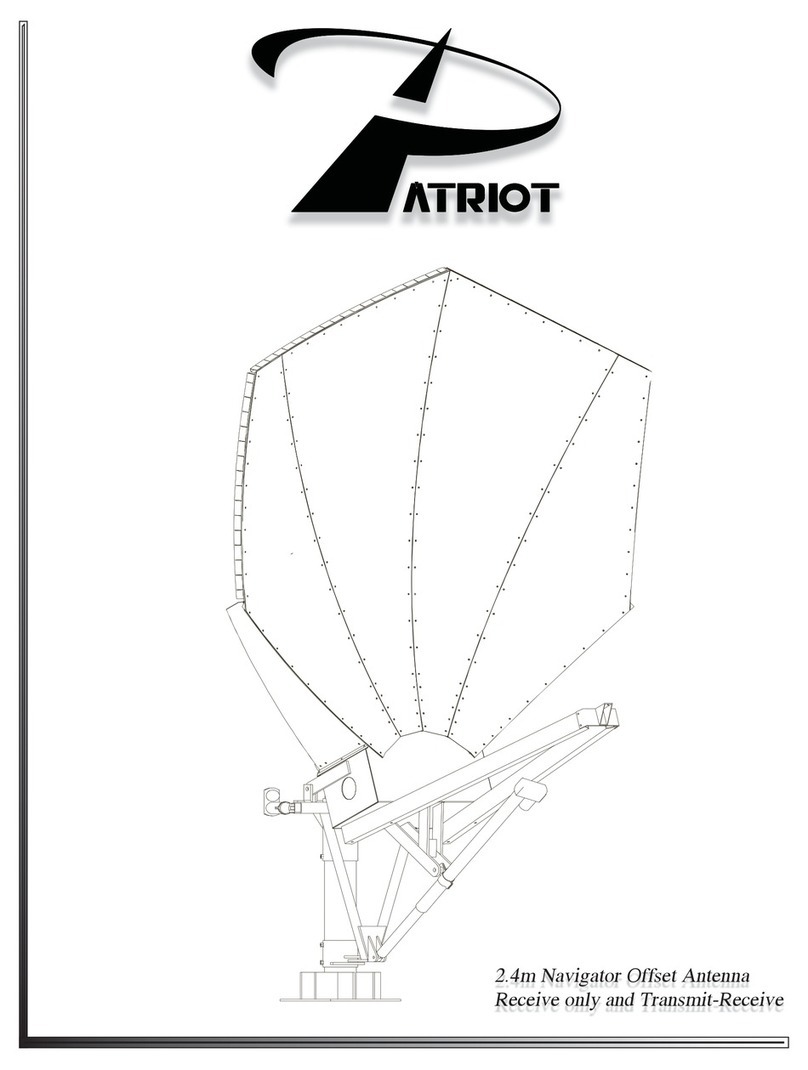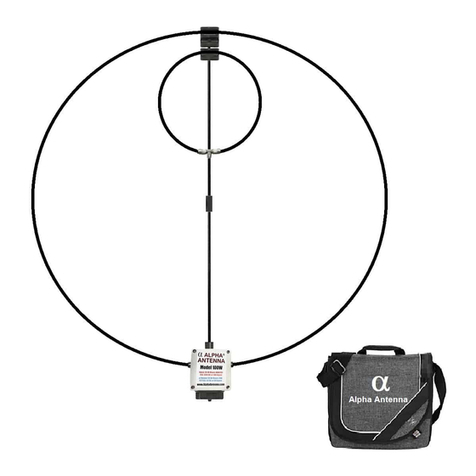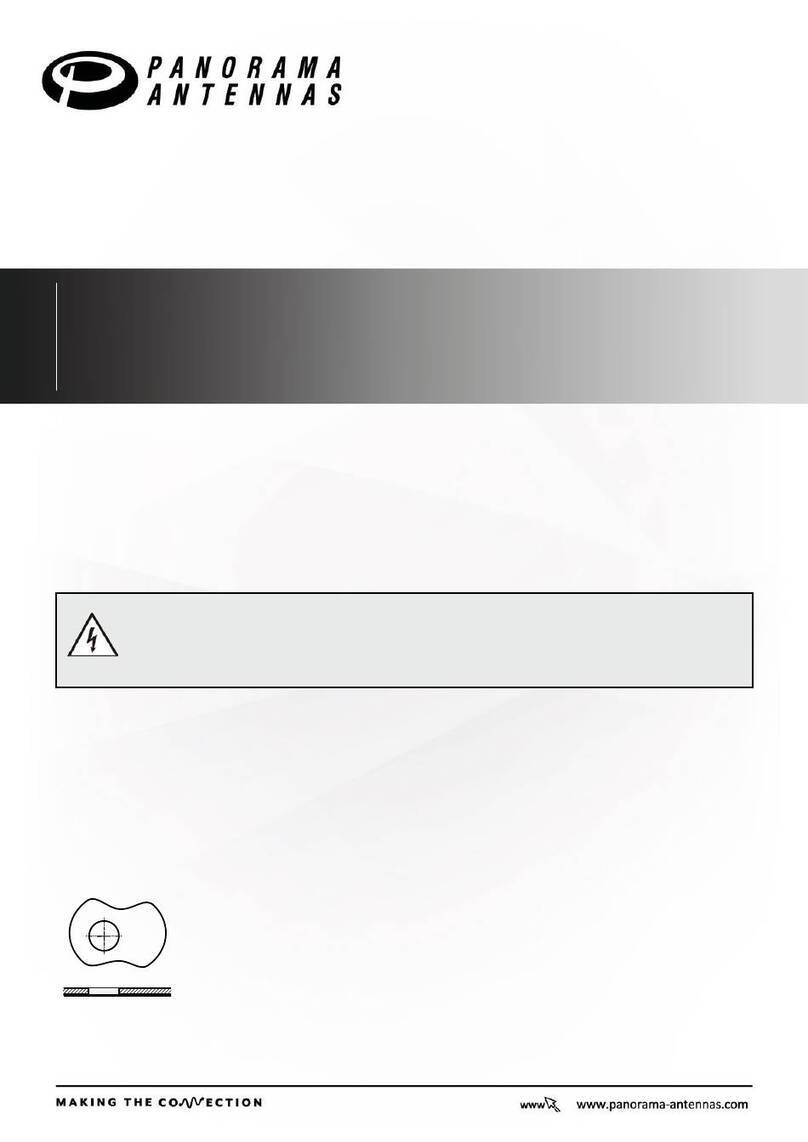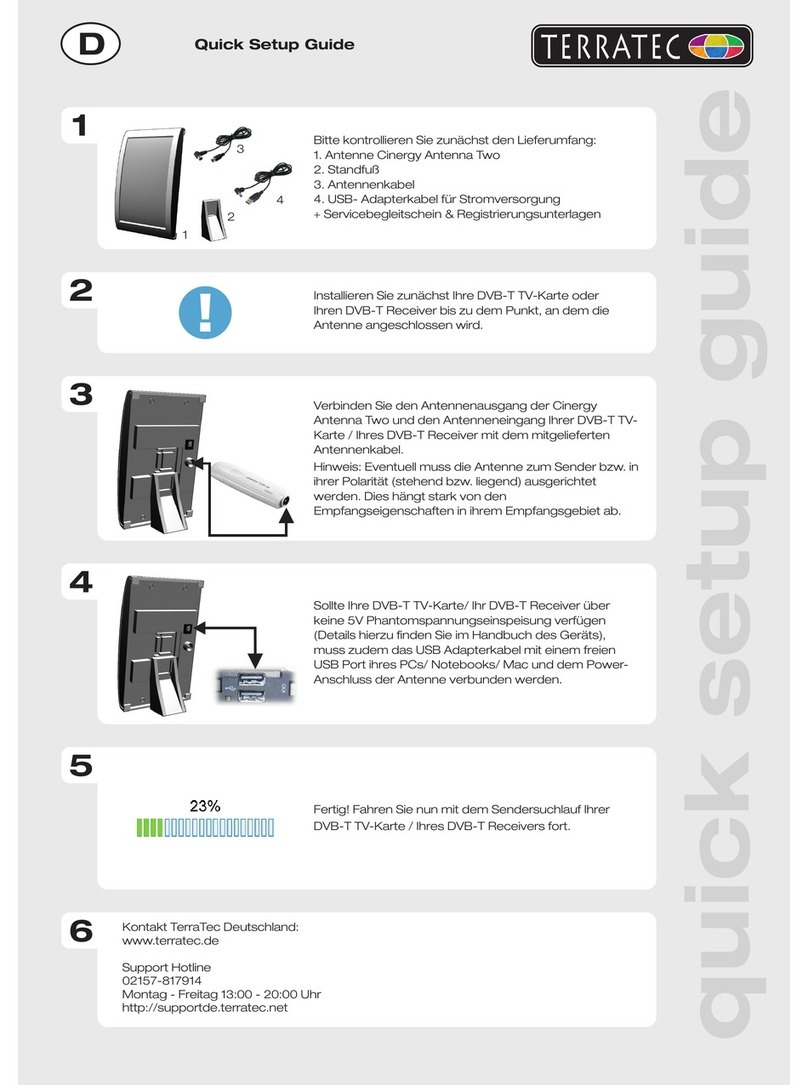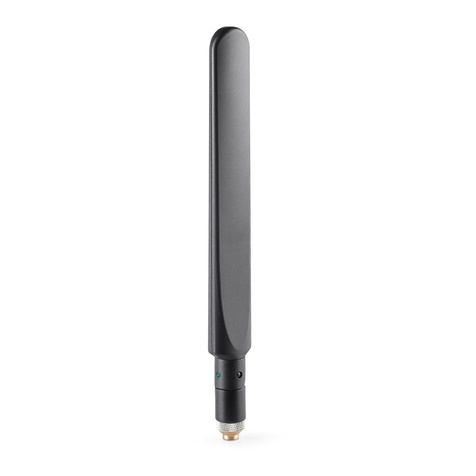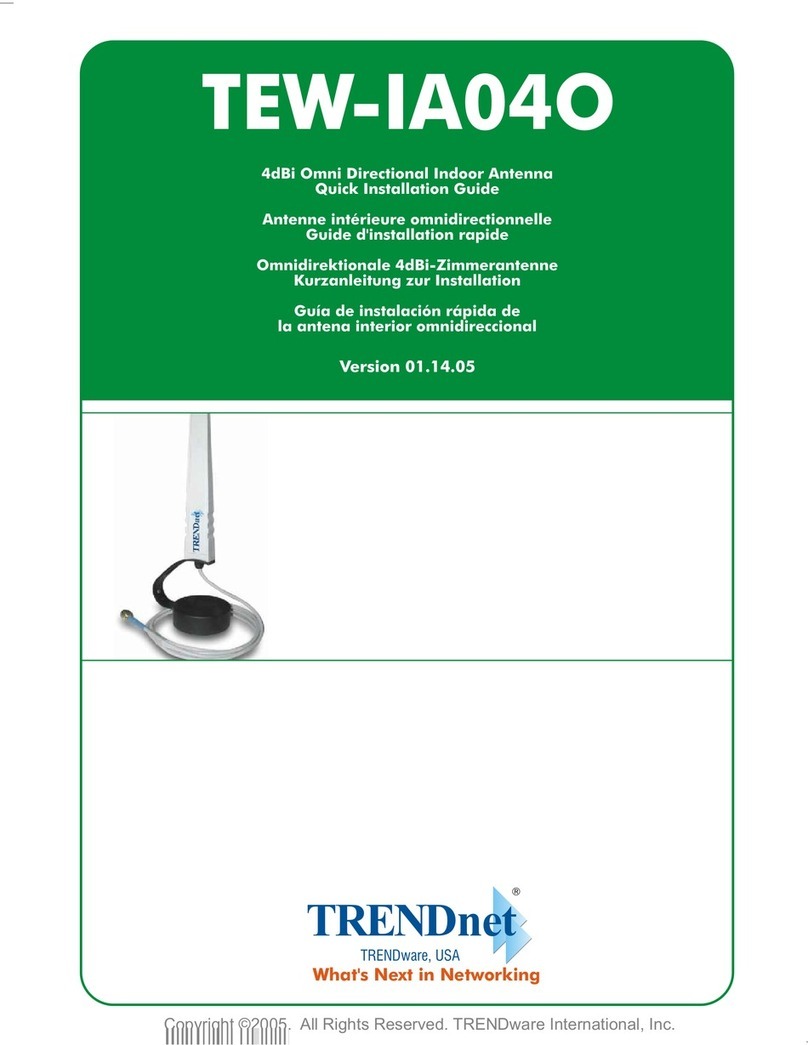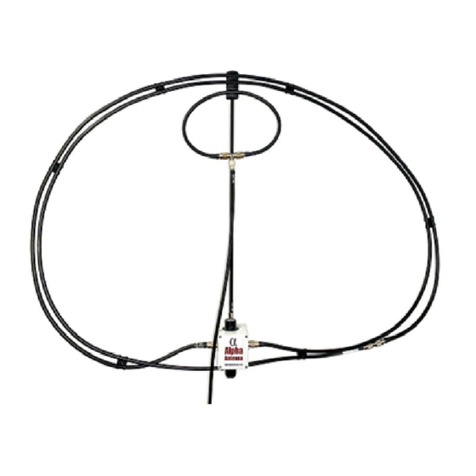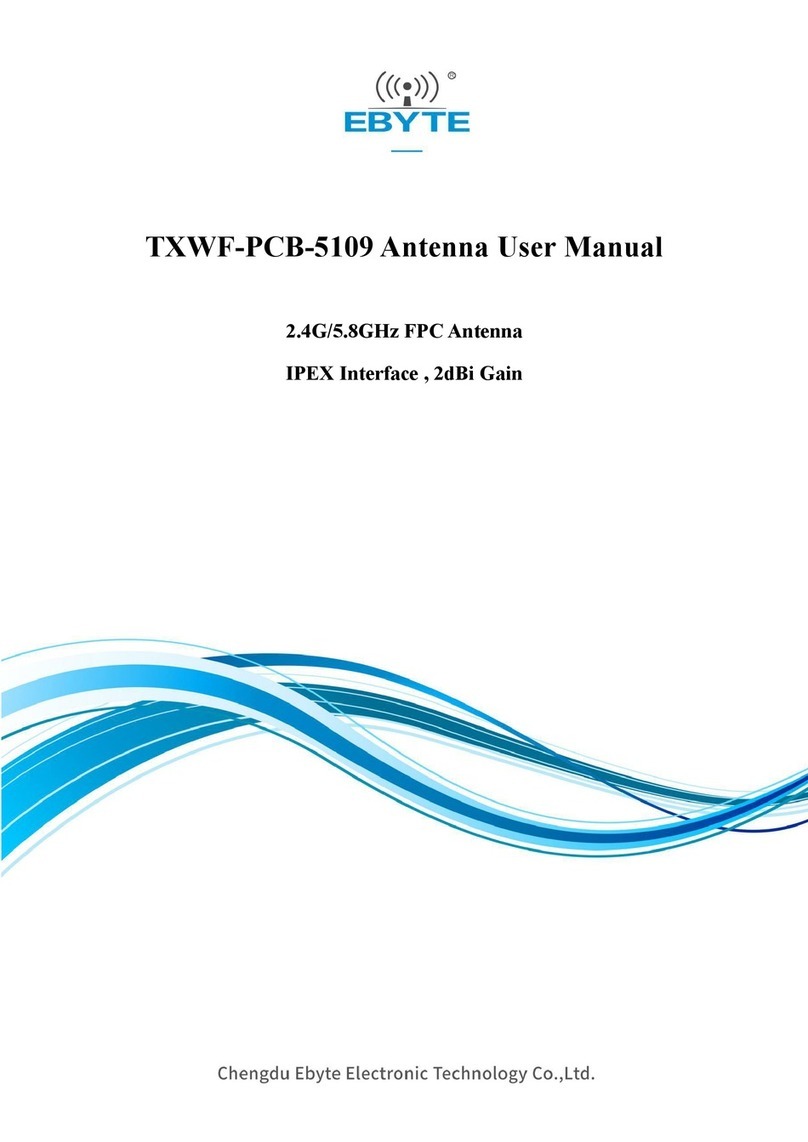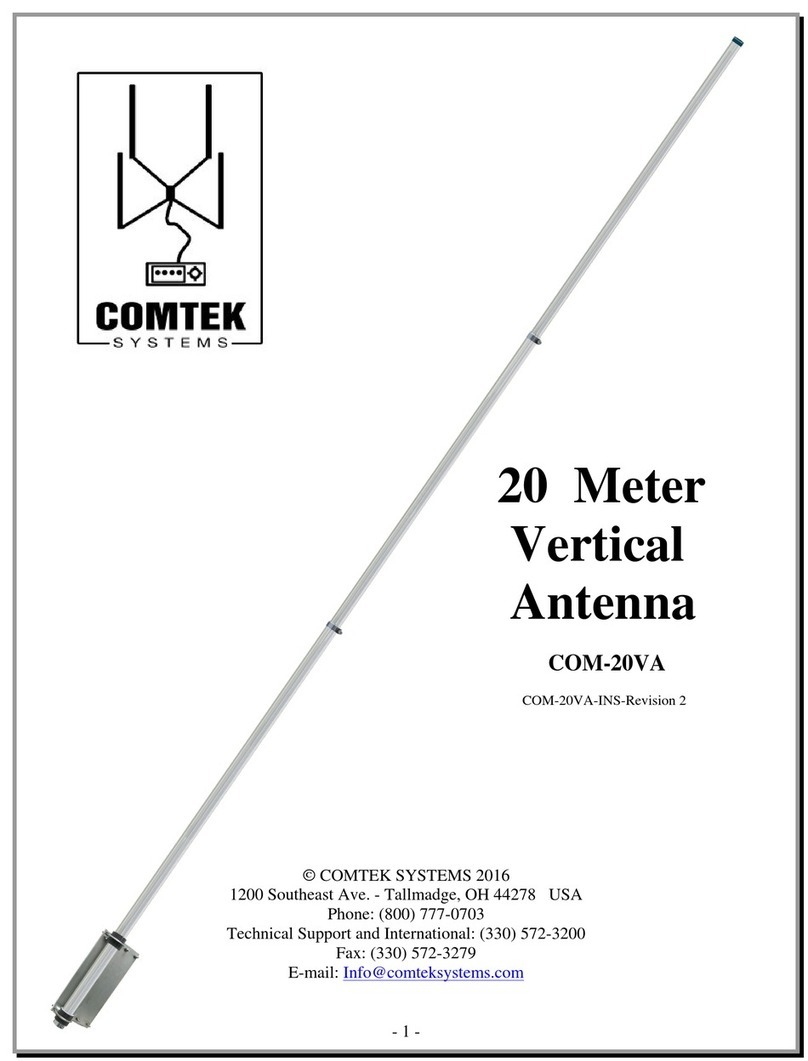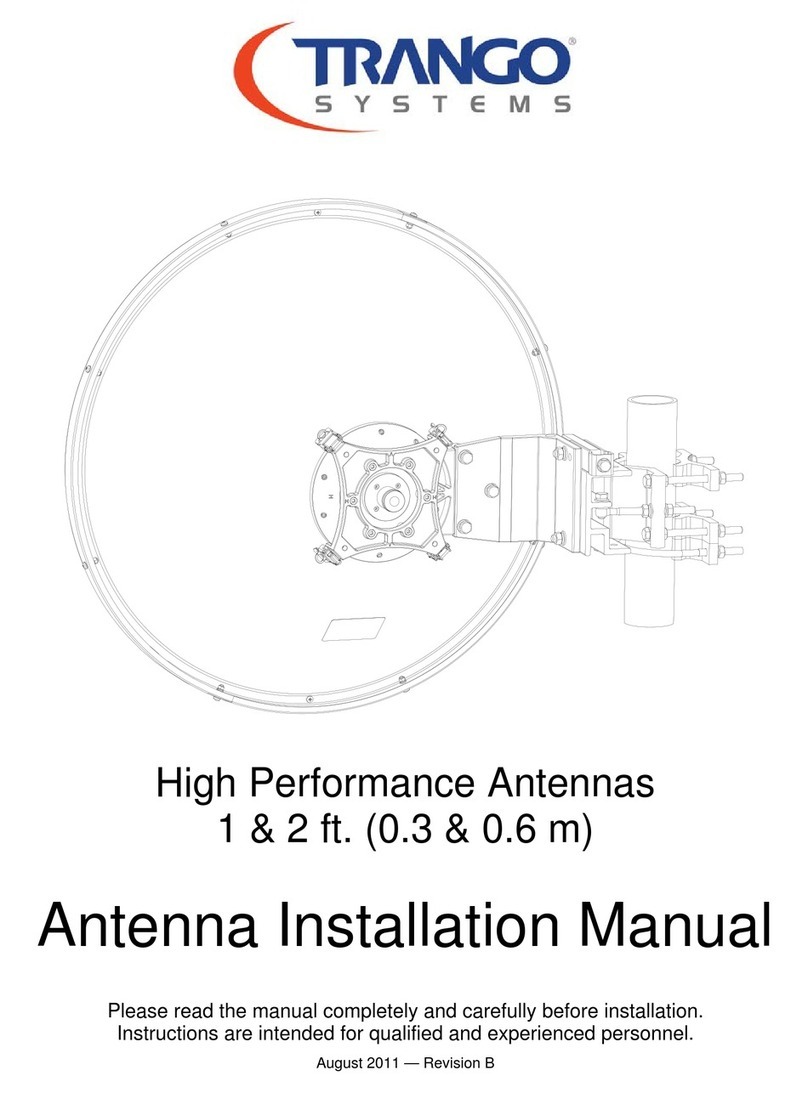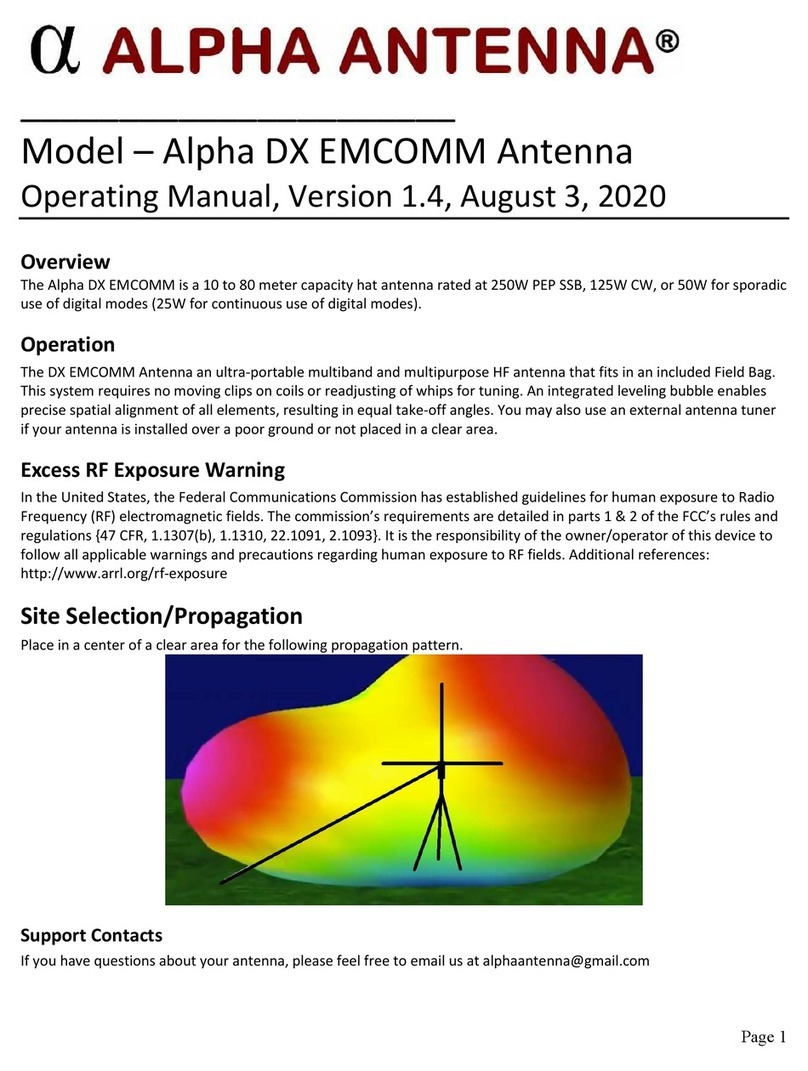
2
This PATRIOT ANTENNA equipment is warranted to be free from defects in material and workmanship un-
der normal use and service. PATRIOT ANTENNA shall repair or replace defective equipment, at no charge,
or at its option, refund the purchase price, if the equipment is returned to PATRIOT ANTENNA not more than
twelve (12) months after shipment. Removal or reinstallation of equipment and its transportation shall not be
at cost of PATRIOT ANTENNA except PATRIOT ANTENNA shall return repaired or replaced equipment
freight prepaid.
This Warranty shall not apply to equipment which has been repaired or altered in any way so as to affect
its stability or durability, or which has been subject to misuse, negligence or accident. This Warranty does
not cover equipment which has been impaired by severe weather conditions such as excessive wind, ice,
storms, lightning, or other natural occurrences over which PATRIOT ANTENNA has no control, and this War-
ranty shall not apply to equipment which has been operated or installed other than in accordance with the
instructions furnished by PATRIOT ANTENNA.
Claimants under this Warranty shall present their claims along with the defective equipment to PATRIOT
ANTENNA immediately upon failure. Noncompliance with any part of this claim procedure may invalidate
this warranty in whole or in part.
THIS WARRANTY IS EXPRESSLY IN LIEU OF ALL OTHER AGREEMENTS AND WARRANTIES, ANY
IMPLIED WARRANTY OF MERCHANTABILITY OR FITNESS FOR A PARTICULAR PURPOSE IS LIMITED
IN DURATION TO THE DURATION OF THIS WARRANTY. PATRIOT ANTENNA DOES NOT AUTHORIZE
ANY PERSON TO ASSUME FOR IT THE OBLIGATIONS CONTAINED IN THIS WARRANTY AND PATRI-
OT ANTENNA NEITHER ASSUMES NOR AUTHORIZES ANY REPRESENTATIVE OR OTHER PERSON
TO ASSUME FOR IT ANY OTHER LIABILITY IN CONNECTION WITH THE EQUIPMENT DELIVERED OR
PROVIDED.
IN NO EVENT SHALL PATRIOT ANTENNA BE LIABLE FOR ANY LOSS OF PROFITS, LOSS OF USE, IN-
TERRUPTION OF BUSINESS, OR INDIRECT, SPECIAL OR CONSEQUENTIAL DAMAGES OF ANY KIND.
In no event shall PATRIOT ANTENNA be liable for damages in an amount greater than the purchase price
of the equipment.
Some states do not allow limitations on how long an implied warranty lasts, or allow the exclusion or limita-
tion of incidental or consequential damages, so the above limitations or exclusions may not apply to you.
PATRIOT ANTENNA has the right to void the warranty when the antenna is installed by someone other then
a certied installer.
LIMITED TWELVE (12) MONTH WARRANTY
Product Serial Number- _________________
Date Purchased- ____________
Patriot Antenna Systems
704 North Clark Street
Albion, MI 49224 USA
Tel: (517)629-5990
Fax: (517)629-6690
















